YES! Transmission stop leak products do work. These products actually seal the leaks in transmission and prevent the car from losing transmission fluid.
However, on deeper analysis, various questions arise: are transmission sealers sustainable in the long run? How do they work? How regularly can I use them? All of these are going to be answered in this article.
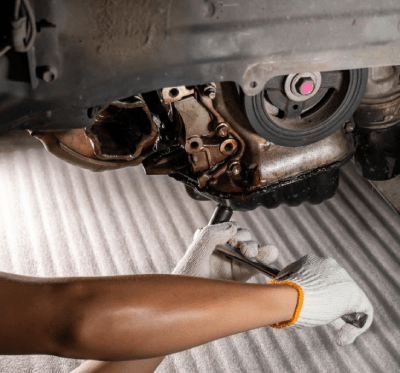
Leaks are probably the most pernicious issues a car owner might ever have to deal with; ergo, a general sense of urgency usually felt leads one to seek unconventional methods to control them.
Your transmission system is a system that works on hydraulic pressure to help the shifting of gears and to keep the wheels turning at certain revolutions per minute (RPM). Fluids might leak when the system is worn out, and transmission fluids can help fix them.
How Do Transmission Stop Leak Products Work?
Most car owners think that transmission sealers work by somehow sealing the leaks in the transmission, by sending particles to seal them up, or by hardening enough that they act as a block between the fluid and the leak.
This is not the case. Transmission sealer products seal leaks through swelling. How? They contain an additive that causes the rubber seals to swell up, temporarily sealing the holes in the transmission, and some even seal the busted pan gasket.
They work for most manual and automatic transmission systems.
Most additives being used are designed with a plasticizer as the basal material, with rubber seals in mind. This means that these rubber seals can soften, dilate, and restore worn-out rubber seals to their prime condition.
Our readers also enjoyed: Can ABS Sensor Cause Transmission Problems?
Are Transmission Stop Leak Products Safe to Use?
Unfortunately, stop leak products are not recommended to use for extended periods. This is essentially a “quick-fix,” which can cause further damage to a car’s transmission system.
When the rubber seals expand, they might stretch resulting in even more wear and tear. What’s more, the additives do not draw distinctions between the good parts of the seal and the bad parts; all parts of the seal swell.
When parts of the seal that are still in good condition start to swell, this means that they might wear out faster, causing new leaks to develop. In addition to this, the old leaks are still present.
They do not just disappear because the parts surrounding them have swollen up to make up for their compromised integrity.
They still need to be replaced because the results would not last. In the long run, it is a splurge of time, money, and effort that might work at first but ends up not paying to you or your car. It is always recommended to take the car to a mechanic and replace the broken parts.
How Long Does It Take to Stop the Leak?
Depending on the transmission leak concentrate and brand used, it is expected that the leak stops and is restored within 2-3 days of driving.
Some brands recommend waiting about 30 minutes to allow the product to blend, producing nigh-immediate results.
Other brands recommend multiple applications, and it is generally a good rule of thumb to avoid these because multiple applications could further compromise the integrity of the transmission system, along with the wastage of both additive and transmission fluid.
Our readers also read: This Is Why the Mazda 3 AT Light Comes On
Good Stop Leak Products
Numerous transmission stop leak products are available on the market. Examples of such products include:
- Blue Devil Transmission Sealer
- Lucas Transmission Fix
- Miller’s Oils stop leak
- Gold Eagle’s No leak, Transmission Stop leak
1. Blue Devil Transmission Sealer
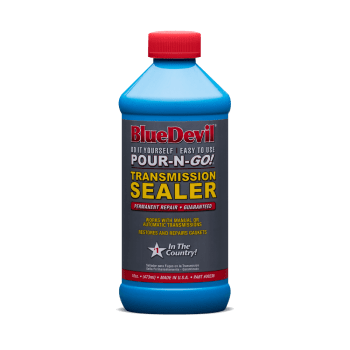
This brand is very reputable since it has spent over two decades building consumer trust. It started production in 1997 and is well known for permanently fixing rubber seals.
It effectively takes care of leaks permanently because it focuses on the cause of the leaks, which in most cases are gaskets and seals deterioration, thus restoring loose, cracked, shrunken, dried seals and gaskets.
The additive solution of the product is based on a plasticizer for rubber seals; hence it can restore seals to original or near original condition.
Blue Devil also boasts of another selling point, apart from its lasting solution. It works in both manual and automatic gearboxes.
One ounce of this stop leak product is used with one quart of transmission fluid for application.
2. Lucas Transmission Fix
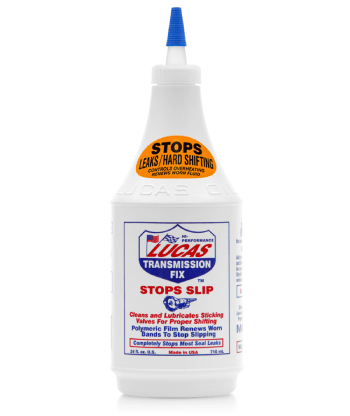
This brand is well known in the automotive world, and one of its many products is the Lucas Transmission Fix. This stop leak works to remove seal leaks once applied in the car.
The standard size of a bottle is about 24 ounces; hence a bottle of Lucas Transmission Fix is sufficient for one standard transmission.
However, for larger transmissions, double quantity can be used. Once the product is applied, the effect starts emerging once you start driving.
3. Miller’s Oil Stop Leak
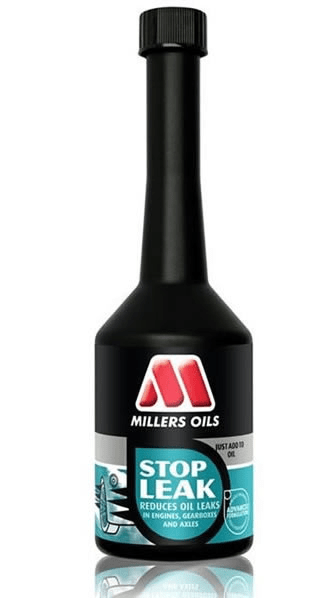
This brand has been producing automotive products since 1897; hence they’ve had over a century to perfect their products. They are well known for their high-quality oils capable of effective performance in unfavorable conditions.
This brand has a bonus over its competitors as it’s effective in engines stopping leaks. Its versatility doesn’t end there as it is also suitable for both automatic and manual gearboxes and petrol and diesel engines.
You can pour the entire bottle into the engine or gearbox as long as there is no overflow.
4. Gold Eagle No Leak, Transmission Stop Leak
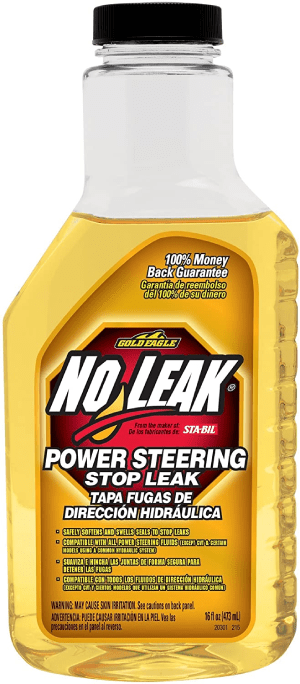
This is also a very old brand, existing for about 90 years; thus is very reputable in what they produce. This stop leak works in manual and automatic gearboxes to rejuvenate and restore old rubber seals to eliminate seeping fluid and leaks.
The mechanic should remove oil from the gearbox before adding a stop leak product to prevent overflow. He can only use one bottle once.
How to Get Bigger Transmission Leaks Fixed?
Some transmission leaks might require a different approach other than stop leaks to eliminate the problem.
- You should replace the fluid line when the transmission line is leaking. Depending on the damage, you might get away with replacing just part of it. However, if the leak is coming from the pressurized cooler line, the entire line must be replaced.
- The gasket should be replaced if it has deteriorated beyond repair. Pan should be removed, oil drained, and old gasket remnants cleaned up before replacement. There are cases where the pan is damaged and not the gasket. Once the pan is replaced, a new gasket must be attached to the new pan.
- New seals can be installed if they have deteriorated. Installation of the new one must be done correctly to prevent new leaks.
- If the pan bolts are loose or damaged, they should be checked for possible replacement. If the defect is caused by vibrations, the bolts can be tightened but if the threads of the bolts are worn out, they must be replaced.
- If the leaks of your car do not stop after the use of stop leaks, consult an appropriate mechanic for further investigation.
Conclusion
Leaks sometimes occur due to a variety of reasons. Stop leak products are a straightforward option to help stop these leaks when they work. They start working immediately and are very easy to use.
However, if you need to change certain parts, such as your gasket, pan, or bolts, proper installation is important to prevent possible future leaks. A proper mechanic should be consulted for installations.
Also, it is important to remember that a stop leak product will not permanently fix the damage. It is a temporary solution, so you can drive the car to a car repair shop and have it fixed.
My name is Jeffrey Williams and I have been a car mechanic for over 35 years. I am currently working NYC Auto Repair Shop, in New York City and recently developed a strong passion about blogging. I decided to put together this blog where I will try and answer the most commonly asked questions I get on a daily basis from my customers.








